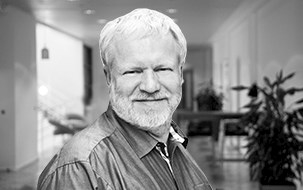Supra-EMC project will remove stumbling blocks to green power transition
Malfunction due to disturbances from electrical devices is a growing problem with millions of devices attached to the power grid. A new research project will create tools to reduce the phenomenon.
Converting renewable energy through power electronics has a bad side effect
70% of electrical energy is processed by power electronics, such as motor drives and chargers for laptops or electric cars. It’s very efficient to convert renewable energy like wind and solar supplied via the power grid through power electronics, but it has a side effect of creating electromagnetic interference, EMI. Interference can make traffic lights malfunction, increase energy losses, disturb magnetic card readers, and cause errors in readings on the millions of smart meters, MCS, that is supposed to support intelligent control of the European power grid.
The biggest problem is in the supraharmonics frequency range below 150 kHz where new electrical emission limits are rolled out these years. There are very few energy-efficient solutions for the compatibility of power electronics in this frequency range. That’s a major roadblocker to realise full electrification.
Making current and future power electronic products compatible with the modern power grid
The research project is led by Associate Professor Pooya Davari at the Energy Department at Aalborg University, AAU. The team corporates with Danfoss Drives A/S, Grundfos Holding A/S, Nordic Power Converters Aps (NPC), FORCE Technology and Schaffner. The team will develop tools and devices which can make current and future power electronic products compatible with the modern power grid, without problems caused by interference. The tools consist of software packages which enable a smoother design process for compliant hardware. One example is black box modelling which makes it possible to predict interference characteristics of a charger or power converter, even without knowing what’s inside the device.
According to Pooya Davari, there is enormous potential in developing power electronic products compatible with new noise emission limits and with the presence of other power converters on the grid, thus reducing the electrical noise emission on the grid in its entirety.
Partners
The project is driven by AAU-Energy and is further supported with technology from Danish industry: Danfoss Drives A/S as a major market leader on low-voltage motor drives, Grundfos Holding A/S as the world’s largest pump manufacturer and NPC as an expert on lighting products. FORCE Technology as a GTS-Institute will provide expert knowledge on EMI/EMC services, and with Schaffner as a global leader on EMC filter products, the project consortium will solve and implement viable solutions in the entire value chain.
We will be able to make products that can be grid-friendly and smoothly integrated to the electrical power grid, while at the same time ensuring their energy and cost-effectiveness. There is no doubt that the Supra-EMC project will be a leap forward for Danish research and development.Pooya Davari / AAU Energy



